For several years, I’ve had Art and the Industrial Revolution sitting in the staging area where I put books that I “want to read” but, realistically, know that I won’t get to them for awhile. I found the paperback, from 1968, on the street and I was drawn to it by the high-contrast typeface of the book’s title—somewhere between a Wild West ‘wanted’ poster and the font of U.S. banknotes. It’s the posthumously published work of Marxist art historian Francis Klingender. It discusses how British artists of the 17th, 18th, and 19th centuries made sense of the industrial infrastructure that was dramatically reshaping their landscape; first with a sense of awe and wonder and then with dread as small northern towns morphed into smoke-belching behemoths. The book zooms-in-on the role of artists while cataloging and interpreting shifts in the way we live, questioning how we situate ourselves in a built environment that is rapidly changing. With the book in tow (still only partially read, I’m afraid), to investigate how art is used to revitalize post-industrial spaces, but I became increasingly interested in how art engages with infrastructure. In what I termed ‘art’ I cast a pretty broad net: including street art, graphic design, landscape design, and architecture. I walked the city’s waterfront spaces—both the sites still occupied by industrial uses and the ones in the process of being recreated– and I tried to document the ways that the visual arts interact with different kinds of infrastructures. My notion of infrastructure was, I’ll admit, relatively traditional: steel girders and poured concrete were most of what I was looking for, and not so much the intangible infrastructures of social and cultural connections. However, in a city like Stavanger it is not hard to discover large-scale pieces of infrastructural investment—old and new, public and private—that shape the city. I wanted to understand how public sculpture, murals, parks, and other works help to define, mitigate, and re-define infrastructure.
In some cases, the infrastructure itself is a highly-aestheticized statement. Bridges, in particular, are appreciated for their artful forms. They have been, historically, not just mobility-enhancers but also civic boosters, and they often become a sort of logotype for their city. San Francisco, Sydney, and Porto are all epitomized by their bridges in the same way Paris is defined by the Eiffel Tower (which was, incidentally, constructed like a bridge and named after a civil engineer who cut his teeth on bridge construction). Countless cities feature a famous bridge or viaduct on their emblem, and they are widely regarded as objects of beauty and pride for residents. It’s only after the era of 1960s urban renewal—and the creation of countless dull concrete bridges, fly-overs, and embankments—that these structures took on a more melancholic tone.
Unlike bridges, there are many infrastructural elements that, while necessary for the smooth operation of the city, are rarely considered visually appealing. These include: recycling plants, power substations, wastewater treatment facilities, and many other ‘heavy’ civil engineering projects. Proper zoning codes help to protect residents from these often-noxious places by setting up buffer areas of light industrial warehouses, garages, and other in-between land uses. However, as cities are expanded and transformed, new loft dwellers and warehouse tenants have found themselves cheek by jowl with cement plants, train depots, and steel-works. In some cases, urban design and art have been called upon to ease some of the issues associated with this proximity.
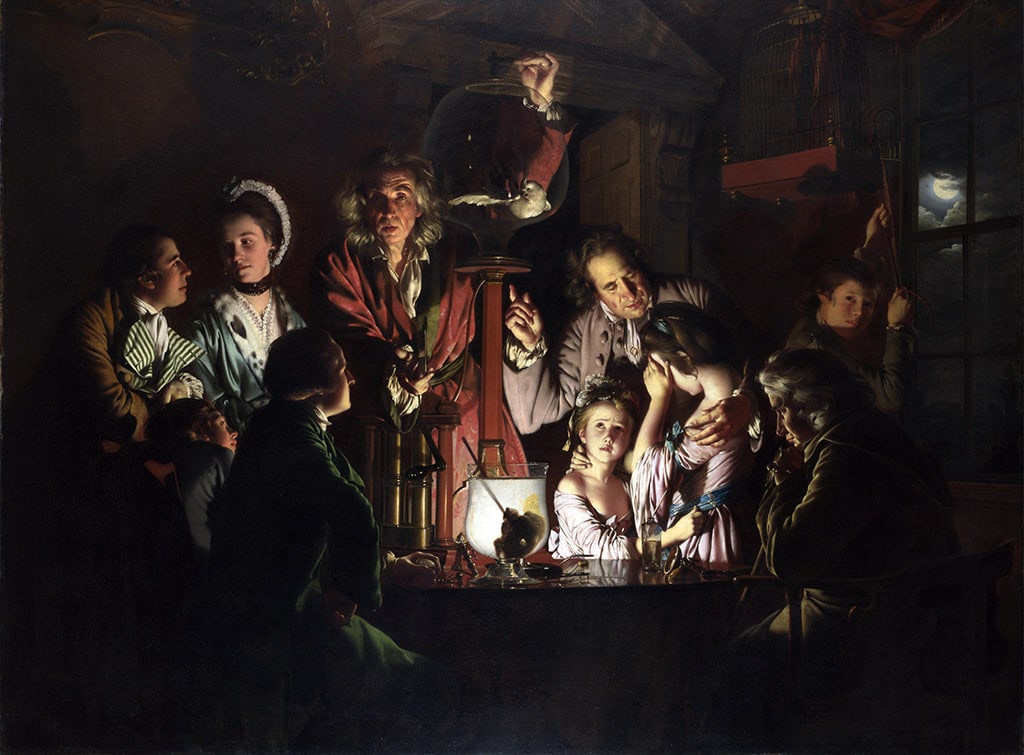
Murals are the default form of mitigation for industrial facilities that are considered ugly. They do nothing to dampen sound or decrease smell of these sites, but they help change the optics. In neighborhoods transitioning from industrial to ‘mixed use’, murals are often perceived as the harbingers of urban change, and polychromic art districts have been accused of exacerbating processes that drive out light industrial tenants (a big source of jobs for immigrants and working class residents) in order to install galleries, chic coffee shops, and condominiums. However, murals come in many forms, and while some might see them as a sort of camouflaging, they can also perform an edifying role, informing passersby of what’s happening in a certain space. This is especially important for municipally-controlled facilities where external art can be key to understanding the processes that keep the city running. In Los Angeles, a mural on the outside of Santa Monica’s Sanitation Department shows the various types of cleaning vehicles stored inside, and an electric substation sports images showing how high voltage is reduced to bring power into the home. These graphic works describe the processes by which governments repair and maintain shared spaces.
In Art and the Industrial Revolution, Klingender talks about the awe and wonder some artists had for new industrial processes. In the 18th century, Joseph Wright of Derby sought to dramatize innovation in his high-contrast paintings of scientific subjects, like An Experiment on a Bird in the Air Pump from 1768, where he uses the lighting conditions previously reserved for religious epiphany to depict the transfer of knowledge by a traveling lecturer. A century later with the industrial revolution in full swing, Adolph Menzel would show the danger and drama of those same processes applied at enormous scale in the heat and smoke of newly-opened factories. His painting The Iron Rolling Mill (Modern Cyclopes), completed in 1875 is a dark prophecy, showing a world in which the scale of industrial production has grown so rapidly that the eminently-human activities of eating, resting, and sleeping are pushed to the sidelines. The figures themselves are no longer central in the drama: it’s the giant wheels, levers, and furnaces that dominate the composition. By the early 20th century, as urban landscapes continued to change with industrialization, artists grew more comfortable with the massive new structures that dotted skylines. Precisionist painters like Charles Demuth and Charles Sheeler celebrated smoke stacks, water towers, and cranes in their work. Demuth’s My Egypt famously recast a grain elevator in his native Lancaster, Pennsylvania as a monumental subject on par with the pyramids. Yet, despite an interest in industry, artists sought largely to depict—and not intervene in—these sites.
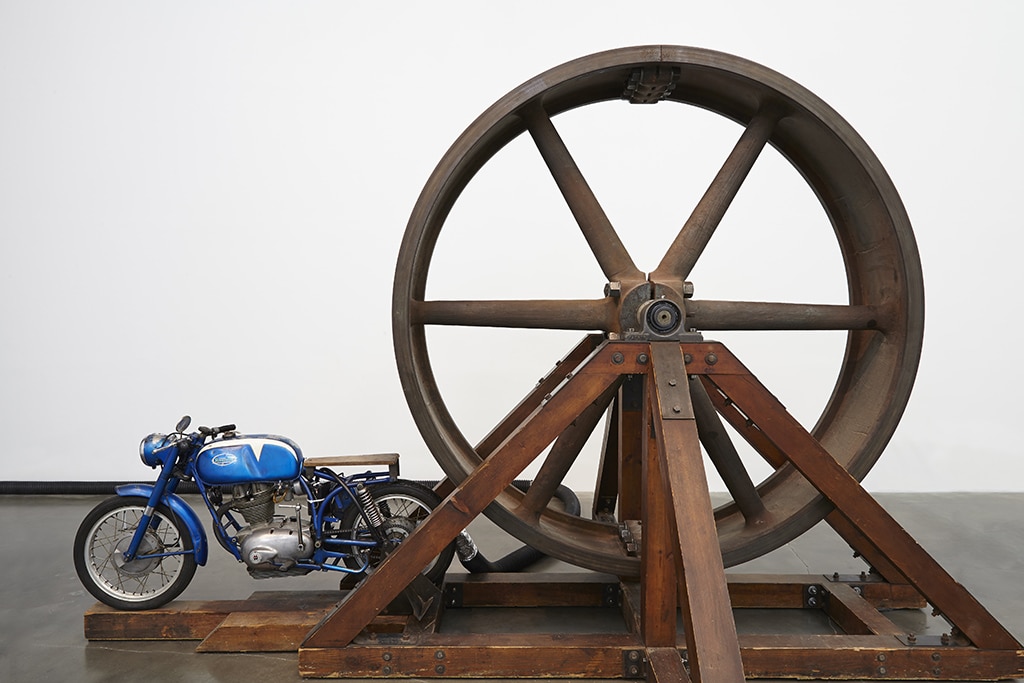
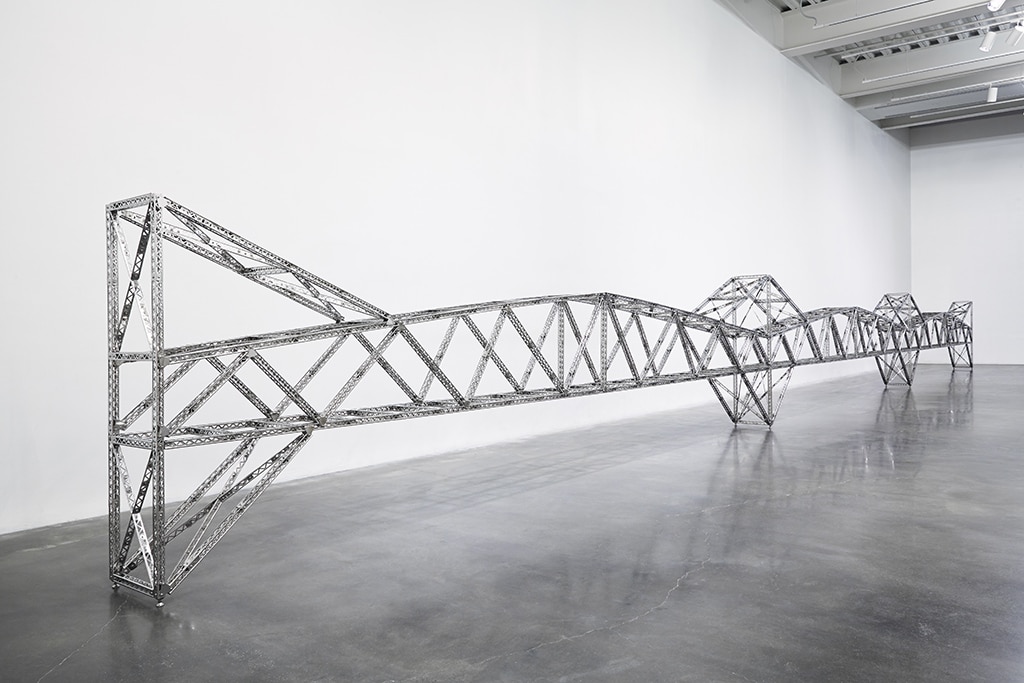
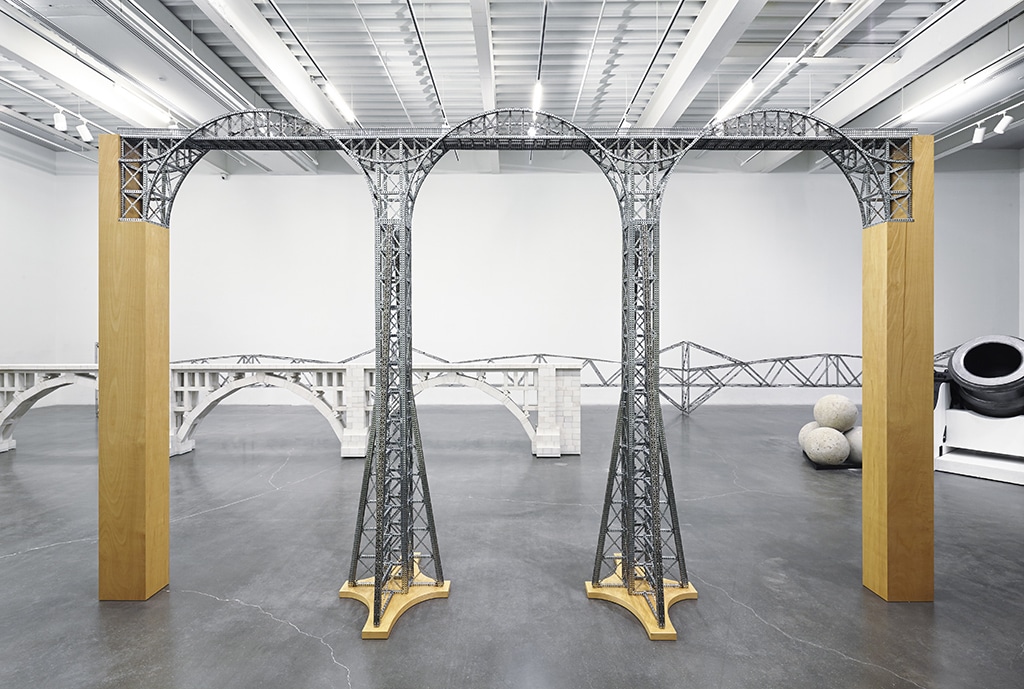
Artist interventions only really began with the existential crisis of deindustrialization. This came to the fore in the 1970s, with new forms of monumental sculpture and an emerging public-oriented spirit on the part of artists who had begun to live and work in deindustrializing neighborhoods (New York’s SoHo being the most famous, but certainly not the only example). At the same time, arts associated with the Land Art Movement were creating monumental works in far-flung locales, and it wasn’t long before similarly-inspired cultural producers looked to mortubund infrastructure as a space to realize mammoth works that, because of their location in cities, could also have mass appeal. Gordon Matta-Clark famously cut away sections of a moldering building at New York City’s west side piers to create the ephemeral installation “Day’s End,” an attempt to turn derelict shipping infrastructure into a new civic infrastructure. Sadly, the “indoor park” that he had planned never came to fruition, and would take several decades and a new generation of artists to appreciate this aspect of Matta-Clark’s work. Other artists, notably Chris Burden, grew interested in making pieces that combined art and engineering, often in a zany, Rube-Goldbergian manner. Burden’s works from the late-1970s onward recast the revered building blocks of industrial America—the mill wheel, the truss, and the bridge—as big toys. His last major retrospective, Extreme Measures, which was on view at New York’s New Museum in 2014, presented rooms full of giant sculptures inspired by childhood playtime activities. Taken together, they point to the fact that—just as kids use Erector Sets to build out fantasy cities—we, adults, have also created the world around us. The physical landscapes of human settlement respond to distinct needs, but they also include flights of fancy. During a period of declining factory jobs and departing heavy industry meant that girders and gears could be sent from the world of labor to the gallery.
When I came to Stavanger I was intrigued by the fact that the city is defined both by its thriving art scene and its industrial backbone. Murals abound, and I was excited to see numerous street art pieces, most of them painted under the auspices of the NuArt festival, sometimes in partnership with local industry. A good number of these focus on bringing recognition to those working in heavy and difficult industries: a six-story mural shows two fishermen in insulated bodysuits gazing out over an industrial terrain and a series of small-scale stencils by the Brussels-based artist Jaune depict sanitation workers scaling buildings in their Hi-Vis gear. These are interesting pieces that help us to interpret infrastructure and to raise awareness about the people who work to keep things running. However, they don’t directly intervene in the physical space of the city.
Landscape architects and public artists have reconfigured public space with their works, bringing in infrastructural elements and reworking others. On my first day in the city, I walked to Geoparken to admire the public space created by architects Helen & Hard in front of the Norwegian Petroleum Museum. Their design uses recycled equipment from the oil industry to produce a novel play space where one can bounce on big orange buoys, recline in huge satellite dishes, and skate on metal railings pulled from North Sea oil platforms. The space is designed for kids, but it is used by all ages and it forms a key social meeting point in the downtown.
Stavanger isn’t shy about its oljebyen (oil town) moniker. Most residents acknowledge the role that the fossil fuel industry has played in shaping the region’s economy and, to some extent, its culture since the discovery of North Sea oil in 1969. Partially because extraction happens hundreds of kilometers out at sea and partly because the industry was layered on top of existing fishing and canning industries, the oil trade does not define the town per se. In fact, Helen & Hard’s park helps to illuminate the massive extractive program that happens largely out of view of the public. The scale shift—where buoys and other tools that appear tiny in photographs of offshore platforms are revealed to be wider than full-grown trees—is part of the playful nature of the project. Yet, there’s industry and there’s infrastructure. By its definition infrastructure is necessary to society’s function and needs to be physically sited in proximity to those who will use it. Industry, on the other hand, can be banished to remote areas. Inevitably those too will be in someone’s backyard, and it’s the especially dirty, unsafe, and unpleasant industries that are usually parked in communities with the least agency; a major concern of the environmental justice movement. Industry can exist out of sight and mind (and largely does in a lots of wealthy cities), pushed over borders and into free trade zones. When it comes to necessary infrastructure, well, we’re stuck with it. Few want to live by a wastewater treatment plant but if we are going to continue to defecate we will need to continue to build them.
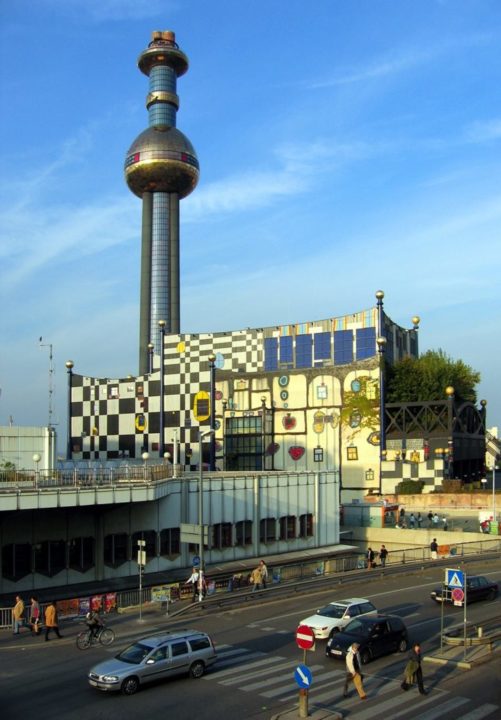
For over a generation, city governments have been preoccupied with ways to make infrastructure safer to live by, less polluting, and more visually pleasing. Starting in the 1960s, forward-thinking architects, like Joaquín Vaquero Palacios in Spain, worked with power companies to create plants that use expressive color and concrete to create beautiful structures. Palacios’s creative is unique in that it interfaces with the worlds of futurist architecture, matter-of-fact engineering, and traditional Kunst am Bau decorative arts. In order to produce this work under the authoritarian rule of Francisco Franco, he also had to deftly negotiate the levers of power. In the late 1980s, Vienna redesigned one of its Spittelau Incinerator with help from the humanist artist-architect Friedensreich Hundertwasser, and what was once an eyesore became an icon for the Austrian capital. The city’s tourism board facilitates tours of the plant and promotes it with the headline “In Vienna, energy is also art.”


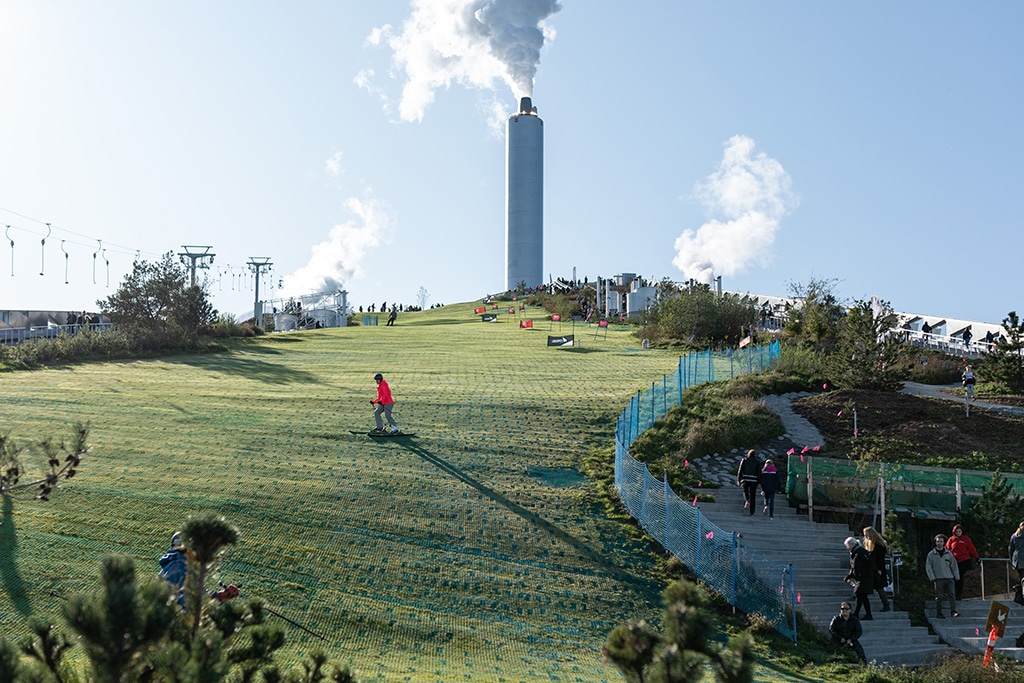
Most creative reworkings of infrastructural facilities focus on the form, and not the function. This is certainly the case for Spittelau, where Hundertwasser’s zany design is actually just a renovation of an existing incinerator (during which the air-scrubbing system was installed helping to reduce the hazard posed by outgoing exhaust). However, newly-opened projects like Bjarke Ingels Group’s ski-slope-cum-power-plant in Copenhagen point to emerging opportunities for architects and designers to create “energy overlays.” The waste-to-energy facility, called CopenHill, has a small ski run that snakes down its sloping form. The massive structure links a potentially-offensive use (power generation) to new amenities (in addition to the skiing, there is: a rec center, roof bar, climbing wall, and education center) in an attempt to make sustainable infrastructure more palatable, and fun.
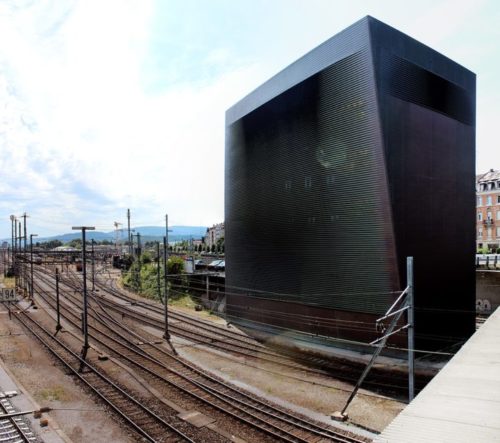
Copenhagen has the goal of becoming the world’s first carbon neutral city by 2025, and to that end they’re going at full tilt to install urban wind farms, bike highways, and green roofs. Creative urban design helps to mitigate some of the disruption that comes with new facilities. This sandwiching of ‘good’ and ‘bad’ uses isn’t new. City governments have long sought to make unpalatable facilities more attractive to communities by packing them with community benefits. In New York City, in the late 1960s, West Harlem residents were roiled by plans to build a wastewater treatment plant in their neighborhood. The plant was necessary to keep the city’s raw sewage out of the Hudson River (water pollution became a hot button issue in the late 1960s with the rise of the environmental movement), but, for many, the plant’s siting—in a majority-black neighborhood—smacked of environmental racism. Surrounding communities mobilized and launched a struggle that stretched across three decades. After years of back-and-forth protest and negotiation, a solution was worked out: the plant was opened but significant sums were spent to install state-of-the-art smell mitigating technology, and the 11-hectare structure was topped by a park. Opened in 1993, what is now known as Denny Farrell Riverbank State Park, features a series of synthetic fields, green roofs that support 11-meter-tall trees, and an Olympic-sized swimming pool. In many ways, this stacking of leisure over infrastructure helped to define a new paradigm and set the bar for community benefits to offset noxious infrastructure.
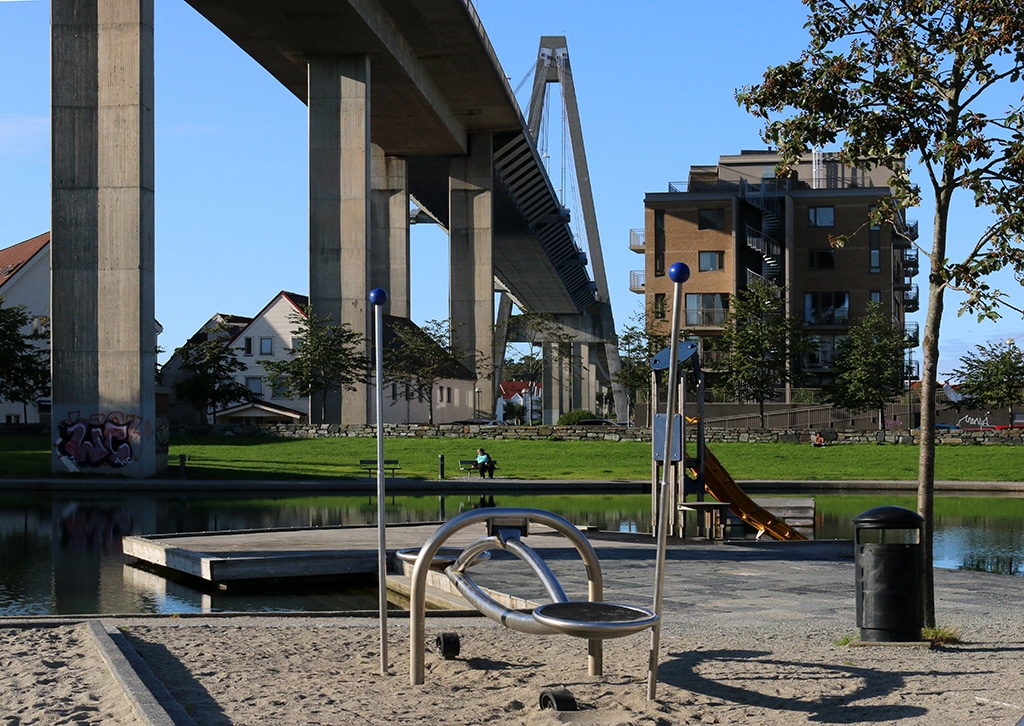


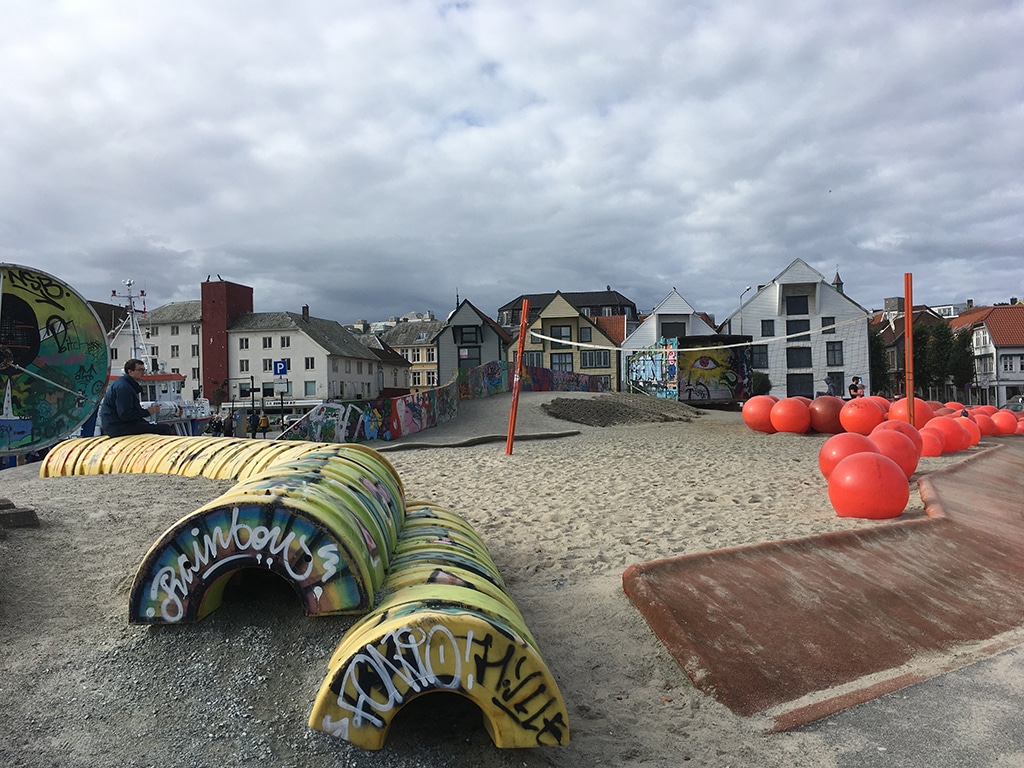
In Stavanger, landscape architecture and the strategic siting of playgrounds has also helped to mitigate some of the drawbacks associated with the city’s largest bridge, the Stavanger Bybru. In the Storhaug neighborhood, the bridge’s footings rise over 25 meters from ground to deck, giving pedestrians below the feeling that they are passing beneath a Star Wars AT-AT Walker. It’s here that city planners have, in recent years, worked to repurpose the vestigial spaces under the bridge as basketball courts, playgrounds, and parks. From this perspective, the span is less ungainly and it becomes a throughline connecting a series of small-scale play spaces.
Infrastructural facilities are not limited to urban spaces; in fact, they are often found in some of our most picturesque areas, where they are frequently concealed at great expense. Even the most protected natural areas are full of constructed elements. National parks are loaded with transportation and sanitation facilities to accommodate guests, and some of our most arresting landscapes—like rivers, lakes, and gorges—double as areas of power generation. As some of these plants have outlived their usefulness they have been repurposed as tourist attractions; the old and more battered the better, as ruins of industrial production play into our romantic desire to see follys sprinkled in the Sylvan wood. On the Lysefjord in Norway, visitors can climb the 4,444 narrow stairs that once served as an access route for the Flørli hydroelectric plant. The dead infrastructure helps fitness enthusiasts to challenge themselves and it facilitates a view of the surrounding fjords that wouldn’t otherwise be possible.
The area around Seealpsee, a lake in the Swiss Appenzeller Alps, is the perfect example of what we’ve come to think of as a natural environment. Green meadows blend into snow capped mountains that reflect in the crystalline lake, and fat brown cows graze the steep slopes. This is the ur-Swiss heimat, the scene adorns thousands of postcards, travel brochures, and the labels of one of the country’s most popular beers; but it’s far from wild. It’s a landscape that has been carefully managed by humans for thousands of years. The land is laced with waterworks, underground tunnels, gondola wires, and hiking paths. In some areas, the cows who graze the slopes (and make the famous Appanezeller cheese) are fed by hay that’s dropped off via helicopter.
Far below the surface, a sophisticated system for generating hydropower drops water from the lake down 253 meters to a hydroelectric station. Towards the bottom of a hiking trail, in a green valley a sly work by the artist Roman Signer helps draw attention to the subterranean infrastructure. The sculptor confounds the landscape by placing a cherry red cube in its midst. A window in the cube allows visitors to see water that’s been redirected from the underground tube. A stream of jet of water, just below the viewer, shoots across a narrow well where it has bore a hole in the stone wall. If you stick your head into the cube’s aperture you can hear the water gushing and even get spritzed by the jet below. The work deflates the idea that the Appanezeller are somehow left behind by the industrialised world, and it illuminates the hydro power produced beneath the trail. It’s a piece that can be appreciated by both engineers and dyed-in-the-wool art folk. It helps to add nuance to our conception of ‘nature,’ and exposes a system that, while critical, often goes unnoticed.
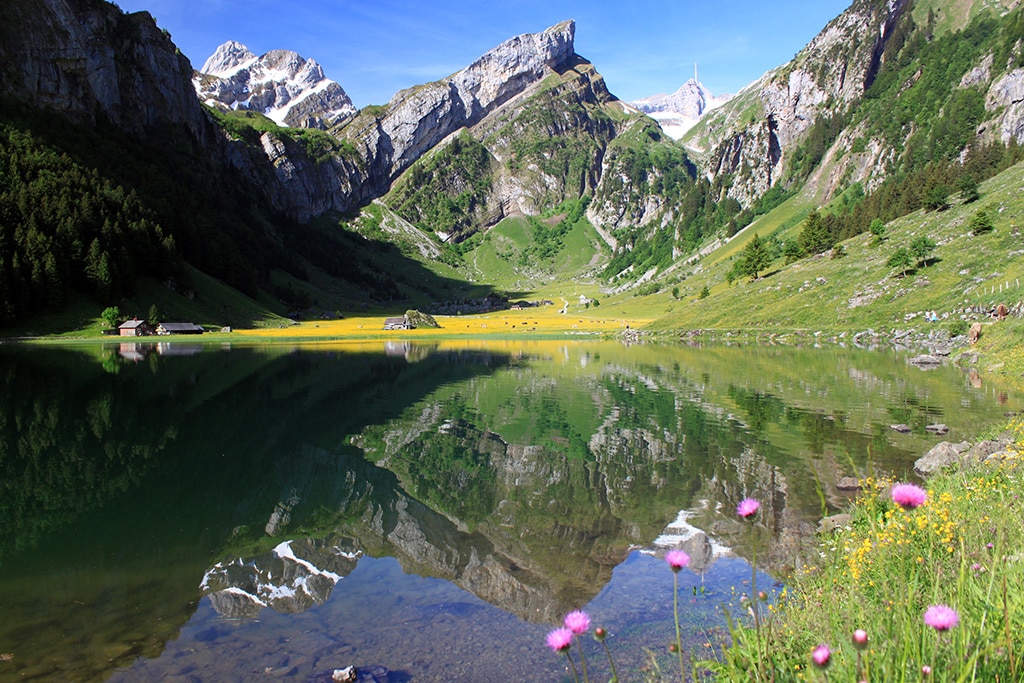

Across the world infrastructure is crumbling. Replacing it is critical but often contested. Most intrinsically recognize that new facilities need to be built, but Not-in-My-Backyard sentiment reigns. What is imagined as a net positive for society is typically seen as a hardship for the locality in which it’s situated. However, the idea that energy generation and infrastructure can be beautiful is beginning to emerge within the ranks of environmental advocates, urban designers, and art-makers. Annual competitions like Land Art Generator, promote creative approaches to renewable energy overlays, and try to address aesthetic issues that drive down the acceptance of green infrastructure. New programs have also been set up to include site-specific artworks at city facilities as they come on-line, and initiatives have been established to place artists-in-residence with city agencies, including departments for sanitation, construction, and aging. These all point to a way by which we move beyond bare opposition to the placement of new infrastructure, and begin to consider how positive and negative infrastructures can be mixed together. Art, architecture, and landscape design can be the major mediators of this process, and they just might help us to find a renewed civic pride in structures that have, for generations, been considered eyesores.
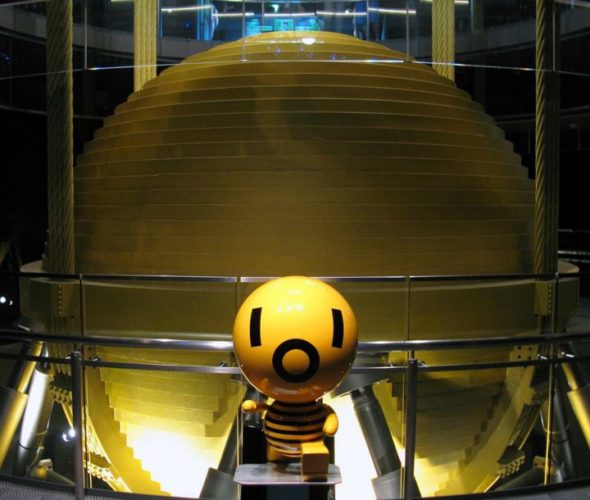
Sam Holleran is an interdisciplinary artist. His writing and research on graphic culture examines the power and politics inherent in the design and use of artifacts in urban spaces, from street furniture to public art to advertisements. His writing has appeared in Print, Public Books, Dissent, and The Avery Review, among other publications. He has worked as an art director, researcher, and educator in the field of civically-engaged design and art with the Center for Urban Pedagogy in New York City and ETH-Zürich. Currently, he develops popular education tools focused on climate policy with Ellery Studio in Berlin.

